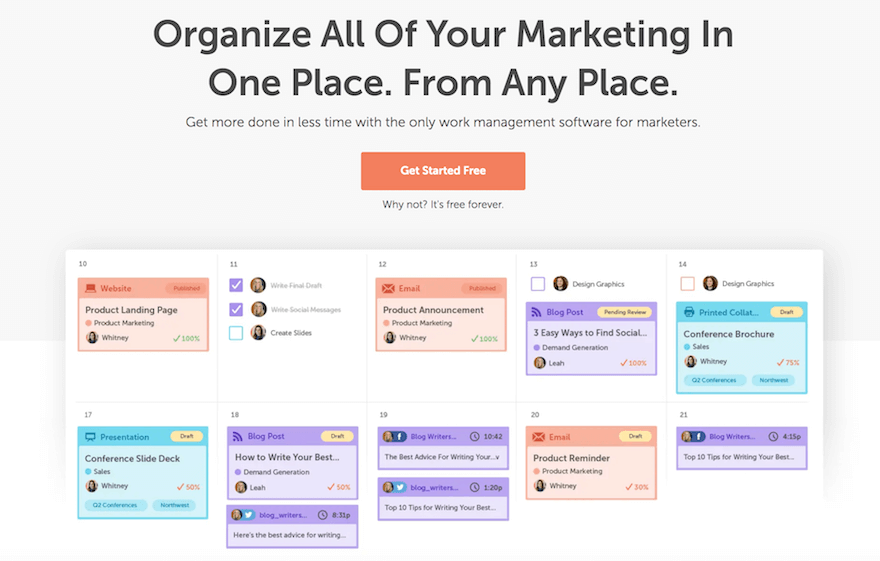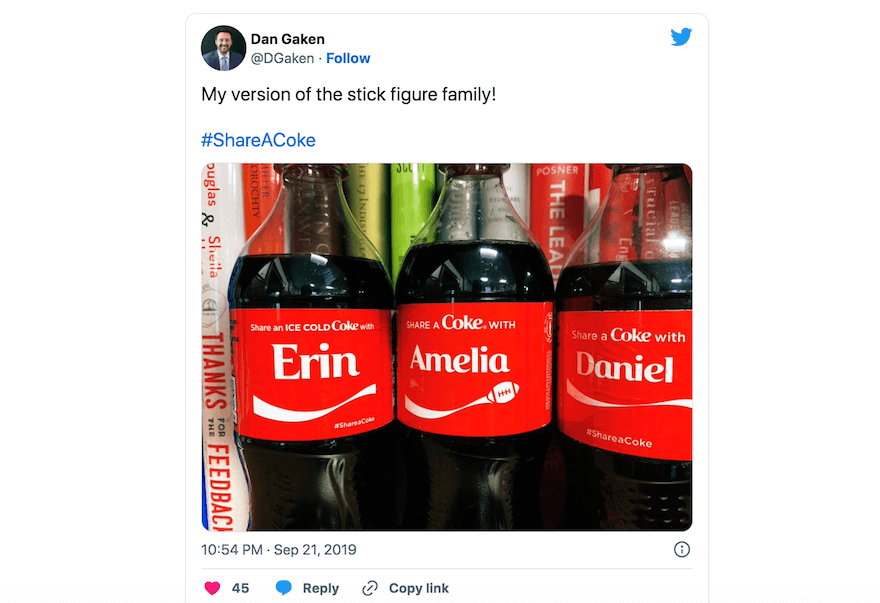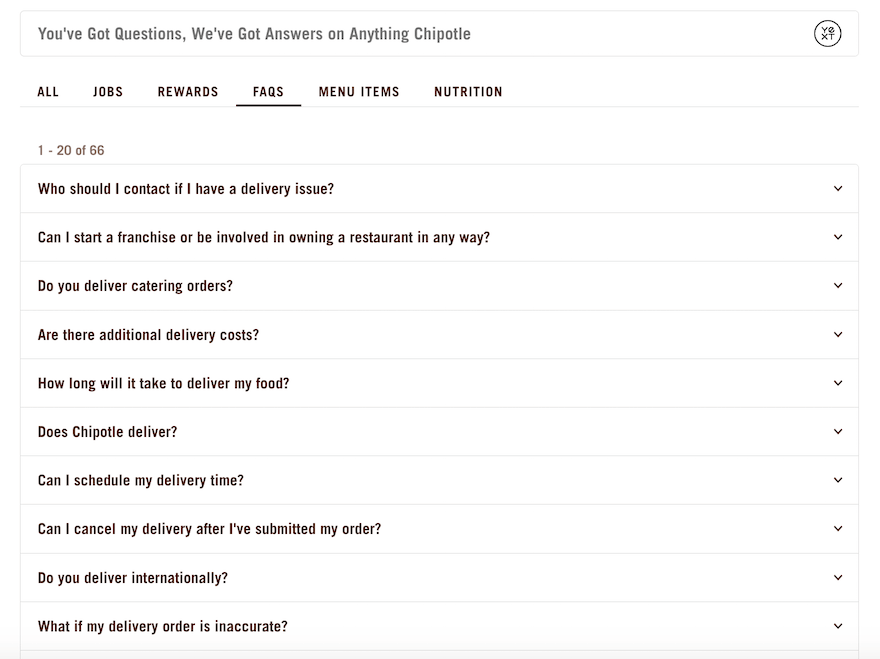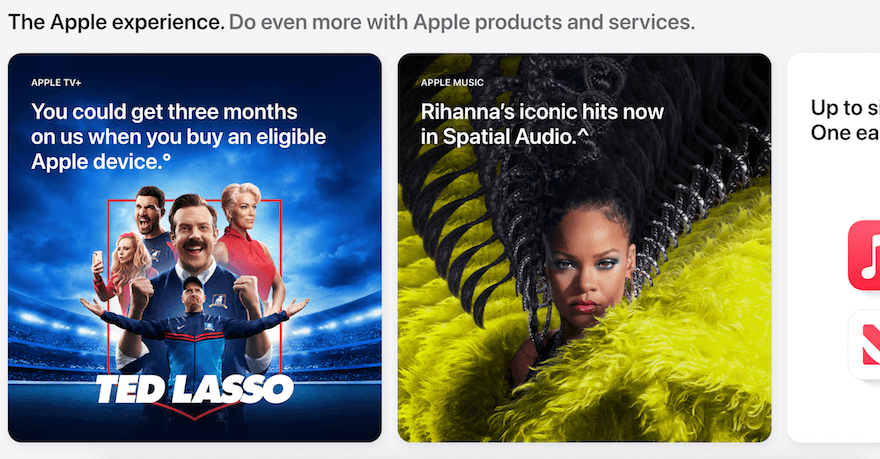Ecommerce Content Marketing: 10 Powerful Strategies
If you click to purchase a product or service based on our independent recommendations and impartial reviews, we may receive a commission. Learn more
With more brands getting online, the eyes of the ecommerce world are all looking to the next big thing that’s going to set them apart from the competition. They’re asking:
How can I market my products effectively? How can I build a community around my brand? How can I drive sales and revenue, exude trust, engender loyalty, and expand my online audience? What marketing channels should I choose?
Well, as it turns out, that “next big thing” has been here, under our noses, all this time – though it often flies under the radar. We’re talking, of course, about ecommerce content marketing.
But what is content marketing for ecommerce, exactly – and why is it important? What’s more, how can your business apply it to reap content marketing’s myriad rewards?
We’ve rounded up our top 10 ecommerce content marketing strategies to find out. Let’s dig in!
What Is Ecommerce Content Marketing?
Ecommerce content marketing is when an online business uses content – that is, blogs, videos, social media posts, email newsletters, whitepapers, ebooks, and more – to build their brand online, and put their products and services in front of a wider audience.
The ethos of content marketing isn’t simply to sell, though – it’s to build valuable connections with consumers. How? Through offering content that’s not only informative, engaging, entertaining and helpful – but genuinely relevant to its customers.
Why Is Ecommerce Content Marketing Important?
First and foremost, ecommerce content marketing is crucial because:
- It allows your business to create – and distribute – valuable content to potential customers
- It helps you establish your brand as a thought leader in your industry, by sharing your first-hand expertise and insights
- It engenders loyalty, and builds trust, with your audience.
But ecommerce content marketing’s benefits go way beyond that. They include:
- More traffic and visibility: good, well-optimized content ranks well in search engines – giving your business a better chance of being discovered by a potential customer.
- Boosted brand reputation: by creating and sharing readable, rewarding content, you build trust and website credibility – setting your business up as a reliable source of information.
- Better customer engagement: blogs and social media posts encourage comments, likes, and shares. You can even use content marketing to promote UGC (user-generated content), encouraging your audience to create their own videos and articles about your brand.
- More affordable: unlike PPC (pay-per-click) ads or working with influencers, content marketing doesn’t actually cost money. Sure – if you’re working with writers and videographers, you’ll need to pay them. But if you have the time and inclination to write your own content, all this highly effective form of marketing will cost you is your time.
10 Ecommerce Content Marketing Strategies
Ready to dive deep into our top 10 ecommerce content marketing strategies?
Us, too!
1. Find the Platform That Works For You
First, we recommend picking an ecommerce content marketing platform.
Content marketing platforms are centralized systems. From them, you can create and collaborate on content, plan out your content calendar, then schedule when, and on which channels, your content will go live.
The platform you choose will depend on your ecommerce business’ budget, ambitions, and unique content marketing needs and goals. However, some we can recommend are:
- ContentStudio
- Contently
- HubSpot
- CoSchedule
- Zerys
Happy hunting!

2. Partner With Influencers and Content Creators
Content marketing is a complex, compelling game – so why go it alone?
By teaming up with content creators, like writers and videographers, you can create content faster and more efficiently – allowing you to meet your goals of posting regularly, and ensure a high standard of quality.
And, by partnering with influencers, you can go one step further. Influencers are content creators – only with masses of social media followers to their names.
When you build an influencer marketing strategy – providing they’re the right fit for your business and industry – you’re putting your brand in front of an often colossal audience of relevant, engaged prospective customers.
Plus, collaborating with influencers doesn’t have to be expensive. There are many micro, macro, nano and mega influencers, all with their own distinct niches and follower numbers. Nano influencers, for instance – who can have as few as 1,000 followers, albeit dedicated ones – can charge as little as $10 per post.

3. Create a Content Hub
Our next tip? Create a content hub on your ecommerce website.
A content hub is a dedicated place, housed on your website, that acts as a repository of insightful and informative content. This content could relate directly to your brand itself, or discuss wider ecommerce trends within your market and industry.
Your brand’s content hub might include:
- Blogs
- Videos
- Infographics
- Podcasts
- Articles
Don’t have time to create all that content yourself? Don’t fret. Content hubs don’t have to consist entirely of original content – providing you reference your sources well, you can pull content from elsewhere on the internet.
This way, you’re acting as both a content creator and curator – helping reaffirm your brand’s authority in the space, while making it easier for your audience to access the content they’re most interested in.
4. Utilize User-Generated Content
User-generated content isn’t created by your ecommerce business – but by your customers.
Every time someone posts about your brand on social media, for instance – say, with a picture of the shoes they bought from your company, or a video talking about how much they love the new lipstick they just purchased on your site – that’s UGC.
And guess what? It’s hugely important. Because you’re not paying those people to post about your brand (unlike with influencers) UGC can come across as more authentic, natural, and trustworthy. It serves as powerful social proof, too – and can help you construct a community around your brand. Plus, it’s free – which is always a bonus!

Find Out More
- Check out these User Generated Content Examples to see how real-life brands run their campaigns.
5. Add Character With Video Content
In one survey of marketing professionals, 86% had used video as a marketing tool – and 78% reported that videos had directly increased their business’ sales.
Videos are a powerful ecommerce content marketing tool. They can showcase your products in a visual, accessible manner, as long as you avoid the common video marketing mistakes. First, make sure you present the narrative of, and history behind, your brand in a way that compels. And add character, depth, and personality to your brand: engaging your customers, and ensuring they resonate with who you are and what you offer.

Find Out More
Video doesn’t just have to be for socials or your website. Why not use it to engage your email subscribers too? Our guide on How To Embed Videos In Emails will help you get started!
6. Create an FAQ Page
FAQ pages are a brilliant form of ecommerce content marketing simply because of how many functions they serve.
On a basic level, they provide important information about your company’s processes – whether that’s around shipping products, logistics, or returns.
On a more advanced level, FAQs can be approached tactically, to target popular keywords relating to your brand and industry. These keywords are the search terms your audience is plugging into Google every day – so integrating them into a handy, centralized FAQs page is an excellent way of naturally attracting those customers to your online store.
Here at Website Builder Expert, for instance, we might have an FAQs page targeting keywords such as “what is a website builder” or “best website builders.” Alternatively, you can simply use your FAQ page to provide clear, transparent information about your business and processes to your audience – as Chipotle does below!

7. Provide Expert Tips on Your Products
The goal of ecommerce content marketing isn’t simply to increase awareness of your brand (what you do). Or to tell people more about your business’ philosophy (why you do it).
It’s to showcase your products, too – and exactly how your audience can use them.
To this end, providing tips on your products – be it from your own team, or from established experts in the field – is a crucial content marketing tool. These tips could come in the form of how-to videos and articles, bite-sized blog posts, or – at the opposite end of the length scale – ebooks and detailed instructional guides.
After all, customers are coming to you to make their lives easier – not to complicate them with convoluted, or completely absent, tips about your products.
So draw upon the power of ecommerce content marketing to offer up a whole new level of expertise about the products you’re selling. Your customers will thank you for it!
8. Add a Product Glossary
As with an FAQ page, a product glossary ticks a couple of important benefits: both for its SEO (Search Engine Optimization) drawcards, and its value to the user.
A product glossary is a list of terms and definitions relating to the products you’re selling. It’s a place to bust the jargon, and put those industry-specific terms you rely so heavily on into language your customer can actually understand.
HDMI? RAM? Megapixels? Refresh rate? Huh?
With an effective product glossary, you can help your customers make better, more informed purchase decisions. You’ll also cut down the number of inquiries, and returns, you receive due to confusions or misunderstandings about your products and their features. It’s a win-win!
9. Promote a Brand Lifestyle
Entering the world of ecommerce content marketing, it’s easy to focus on the first bit – the content – rather than the second. The marketing.
So when you’re planning and creating your content, don’t approach each blog article, social post, or how-to video in isolation. Look at the whole, the sum of the parts – and what you’re trying to achieve.
To this end, you need to not only focus on the features, but the benefits – selling the good night’s sleep, rather than the mattress. You need to be promoting not only a brand, but a lifestyle. Unsurprisingly, this is something Apple does very well.
Rather than focus on its products alone, Apple focuses on the lifestyle that ecosystem of devices and content – from Ted Lasso on Apple TV+, to Rihanna on Apple Music, to the iPhone or iPad you can access them on – offers. It’s about the experience (or, more specifically, “The Apple Experience”) – and the luxuries of lifestyle that come packaged up with it.

10. Gamify, gamify, gamify!
From Netflix’s Black Mirror: Bandersnatch to the hopping dinosaur you see every time your wifi’s down, gamification strategies are becoming an increasingly popular way of combining ecommerce content marketing with play.
Essentially, gamification refers to any marketing strategy or technique that lends from the world of gaming – or rather, mankind’s innate desire to play.
Progress tracking? Rewards and incentives? Competition? All are popular gamification strategies; all work.
For the full scoop on our top gamification ideas for your business, explore our detailed guide.
Content Marketing for Ecommerce: Summary
If you do one thing for your online store this year, make it this: ecommerce content marketing.
Content is, after all, one of the most important marketing channels for ecommerce businesses. Despite often being overlooked – usually by businesses unaware of its benefits, or too time-poor to cash in on them – content marketing will remain a vital way of building your brand, engaging with your audience, and driving vital sales and revenue.
So get on it!


Leave a comment